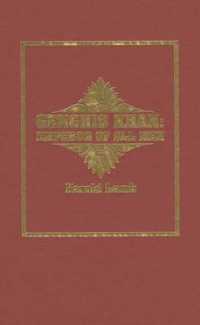Full Description
Presents a critical and geographical exploration of migration through storytelling, power, and spatial practices
Migration: A Critical Introduction equips students with the tools to examine migration through a geographical lens that foregrounds stories, power, and place. It offers an essential foundation for critically understanding migration's diverse forms—labour, family, forced, student, and environmental—within and beyond national borders. This timely volume challenges dominant migration narratives by exploring how policies, legal regimes, and socio-political contexts shape both the categorisation of migrants and the conditions of movement. Three leading scholars of human geography address why and how stories of migration are told, by whom, and to what ends, offering a compelling method for analysing contemporary mobility.
Migration: A Critical Introduction provides a distinctively spatial and critical approach to migration. Its central focus on storytelling allows students to interrogate how migration knowledge is produced, how it connects to power, and how it unfolds across time and space. Practical tools for research, reflective exercises, and further reading lists enhance student engagement, whilst the emphasis on counter-stories encourages the development of more just and imaginative migration futures.
A much-needed guide to thinking differently about one of the most urgent issues of our time, Migration: A Critical Introduction:
Engages students through a unique storytelling approach that encourages critical reflection and participatory learning
Offers conceptual clarity by unpacking key migration terms and their policy implications
Integrates geographical concepts such as space, scale, mobility, and belonging throughout the text
Draws on a range of interdisciplinary critical theories, including feminist, postcolonial, and critical race studies
Features case studies and examples from diverse global contexts, including Europe, the Middle East, Asia and the Americas
Supporting emancipatory and justice-oriented approaches to migration futures, Migration: A Critical Introduction is ideal for upper-level undergraduate and postgraduate students studying migration in courses such as Human Geography, Migration Studies, Political Geography, and Global Studies. It is particularly well-suited to degree programmes in Geography, Sociology, Anthropology, and International Relations.
Contents
List of Figures
List of Tables
List of Boxes
List of Acronyms
Acknowledgements
Section I: Theoretical orientations
Chapter 1 Placing the geographies of migration
Chapter 2 Telling stories about migration
Section II: Three key analytics
Chapter 3 Bodies
Chapter 4 Routes and journeys
Chapter 5 Borders and bordering
Section III: Migration contexts
Chapter 6 Homes and belonging
Chapter 7 Work
Chapter 8 Environment and climate
Section IV: Lived experiences in place
Chapter 9 Encounters
Chapter 10 Connections
Chapter 11 Imaginaries
Section V: Researching Migration
Chapter 12 Telling your migration stories
Appendix Learning more about migration - sources and resources







